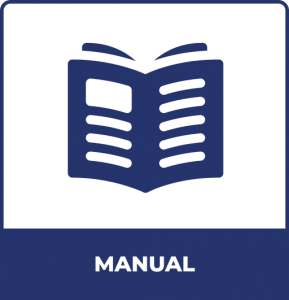This
Handbook is one of a series of tools developed by UNODC to support countries in
the implementation of the rule of law and the development of criminal justice
reform. It is designed to be used by prison managers and prison staff, in
particular, but will also be relevant for other actors involved in the criminal
justice system, such as policymakers, legislators, and members of
non-governmental organizations. It can be used in a variety of contexts, both
as a reference document and as a training tool. While some elements of the
Handbook may not be achievable immediately in some jurisdictions, particularly
in post conflict situations, the Handbook provides national authorities with
guidelines for the development of policies and protocols that meet
international standards and good practice. The focus of this Handbook is the
management of prisoners who are assessed as being a high risk to society or
other individuals. It does not cover children deprived of their liberty or
prisoners who present a risk to themselves (for example, through suicide or
self-harm).
Introduction
1. The
management of high-risk prisoners: summary of key issues
1.1 Humane
treatment and dignity of the person; 1.2 Minimal number of prisoners held in
high-security conditions; 1.3 Individualized assessments; 1.4 Risk management; 1.5
Least restrictive measures necessary; 1.6 Maximum security conditions; 1.7
Security balance; 1.8 Staff recruitment and training; 1.9 Special groups and
mental health
2. Prison
staff
2.1
Recruitment and selection of staff; 2.2 Training and development of staff; 2.3
Conditions of service and staffing levels; 2.4 Prison management; 2.5
Professional standards and ethics; 2.6 Importance of interpersonal skills and
guidance; 2.7 Manipulation and conditioning of staff; 2.8 Staff working in
prisons holding high-risk prisoners.
3.
Assessment, classification and allocation
3.1
Individualized risk assessment; 3.2 Classification; 3.3. Sentence planning
4.
Accommodation and general living conditions
4.1 Accommodation;
4.2 Bedding and clothing; 4.3 Space, light, ventilation and heating; 4.4 Food
and water; 4.5 Sanitation, cleanliness and personal hygiene; 4.6 Special
conditions of imprisonment; 4.7 Prisoners under sentence of death
5. Ensuring
effective security
5.1
Physical security; 5.2 Procedural security; 5.3 Dynamic security; 5.4
Concentric circles of protection; 5.5. Prison security frameworks; 5.6 Security
audits and covert testing; 5.7 Security trends related to high-risk prisoners
6.
Operating safe and orderly prisons
6.1 Order in prison; 6.2 Control strategies to
achieve order; 6.3 Use of force; 6.4 Prisoner disciplinary system; 6.5
Restrictions and disciplinary sanctions; 6.6 Complaints, grievances and
requests; 6.7 Prison intelligence 99 6.8 Incident management; 6.9 Prisoners who
go on hunger strike
7.
Constructive regimes
7.1 Work; 7.2
Education; 7.3 Sport and exercise; 7.4 Religion; 7.5 Programmes to help prevent
offending; 7.6 Responding to mental health-care needs; 7.7 Preparation for
release
8. Contact
with the outside world
8.1 Letters
and telephone calls; 8.2 Access to media; 8.3 Visits; 8.4 Contact with legal
advisers
9. Summary
of key principles for the management of high-risk prisoners
Annex International Instruments, Standards and
Principles (cited in the Handbook)
UNODC
UNODC (2013). Handbook on the Management of High-Risk Prisoners. United Nations Office on Drug and Crime. HB_on_High_Risk_Prisoners_Ebook_appr.pdf (unodc.org)


